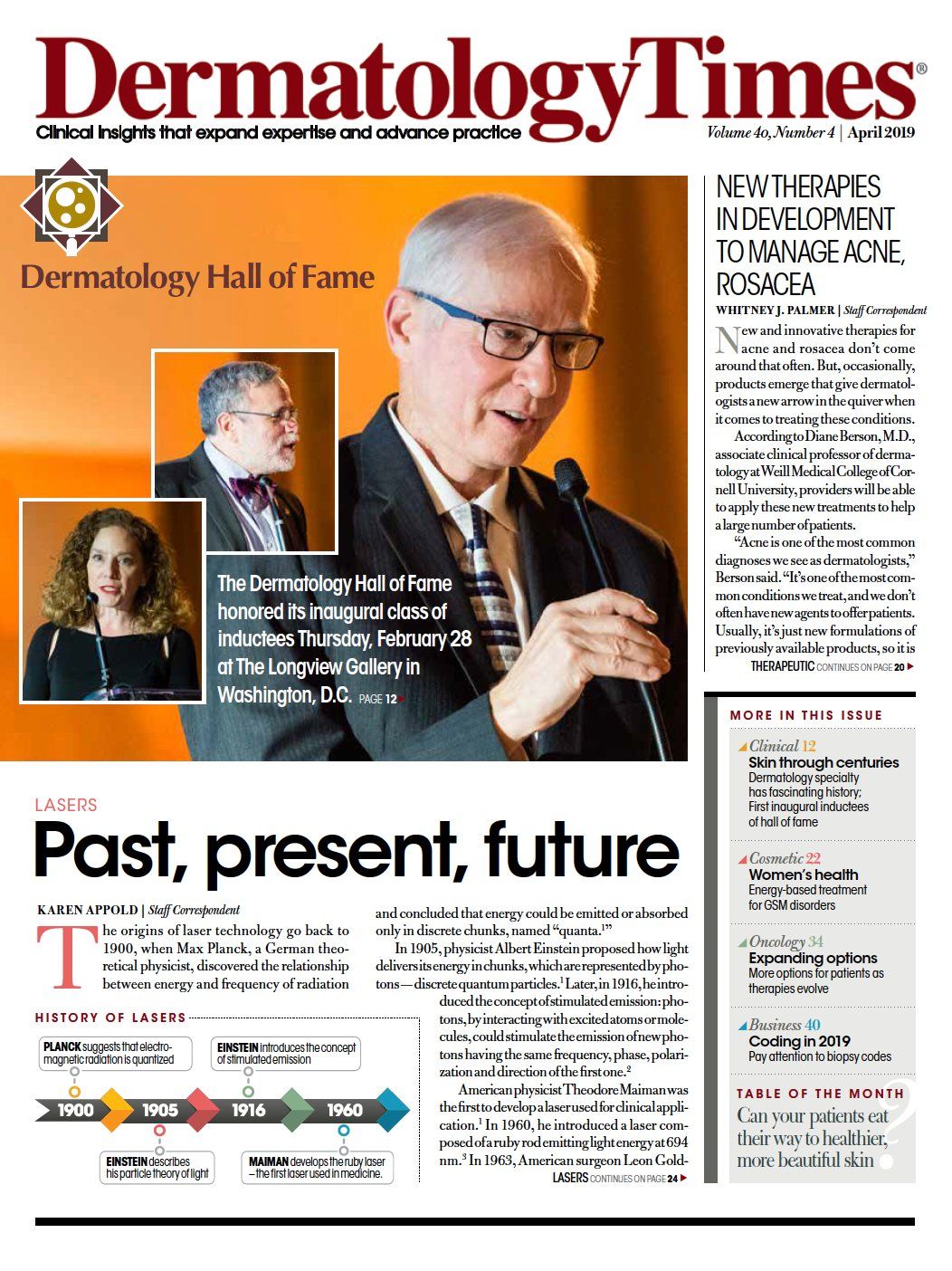- Case-Based Roundtable
- General Dermatology
- Eczema
- Chronic Hand Eczema
- Alopecia
- Aesthetics
- Vitiligo
- COVID-19
- Actinic Keratosis
- Precision Medicine and Biologics
- Rare Disease
- Wound Care
- Rosacea
- Psoriasis
- Psoriatic Arthritis
- Atopic Dermatitis
- Melasma
- NP and PA
- Skin Cancer
- Hidradenitis Suppurativa
- Drug Watch
- Pigmentary Disorders
- Acne
- Pediatric Dermatology
- Practice Management
- Prurigo Nodularis
- Buy-and-Bill
Publication
Article
Dermatology Times
Don't ignore these coding changes in 2019
Author(s):
If you want to get paid promptly in 2019, don't get too comfortable with biopsy codes you've been using for years, says Alexander Miller, M.D., F.A.A.D. Read more from his presentation on coding and office management from the American Academy of Dermatology Annual Meeting in Washington, D.C.
If you want to get paid promptly in 2019, don't get too comfortable with biopsy codes you've been using for years, said Alexander Miller, M.D., F.A.A.D., and a member of the AMA CPT Advisory Committee. He spoke about coding and office management Saturday, March 2 at the American Academy of Dermatology's (AAD) annual meeting in Washington, D.C.
"I wanted to provide greater detail and granularity about these codes, which can be confusing," said Dr. Miller, who practices in Yorba Linda, California.
THE TOP THREE
Start with the three types of primary biopsy codes and three kinds of secondary codes, he said. Primary codes remain stratified by technique: tangential, punch and incisional.
"It's critical to keep the proper hierarchy in mind," Dr. Miller said. "When more than one biopsy is done on the same patient, on the same encounter date, only one primary code should be used. Additional biopsies are specified by their add-on codes. Incisional is always primary to punch and tangential, and punch is always primary to tangential. Think 'bottom-to-top on the biopsy codes list.'"
Consider this example. "If you do two tangential biopsies and one punch, use only the primary punch code and then two additional or 'add-ons' for tangential," said Dr. Miller, who emphasized these codes:
11102: Tangential biopsy
11103: each additional
11104: Punch biopsy
11105: each additional
11106: Incisional biopsy
11107: each additional
UNDERSTAND THOSE ADD-ONS
A .59 modifier, which indicates a separately identifiable procedure done on the same encounter date on the same person, should not be appended to additional biopsy codes, as their valuation has already been adjusted, he said. Adding a .59 modifier could facilitate a further, inappropriate 50% reduction by insurers.
If more than one procedure, completely different from the biopsy, is done along with the biopsy, know whether that .59 modifier has to be applied to any of the other procedure codes and which code should get the modifier. That's where savvy use of the Medicare National Correct Coding Initiative (NCCI) Procedure-to-Procedure (PTP) edits comes into play.
"The system determines whether two paired codes, defining two procedures done during the same encounter, should require a .59 modifier to distinguish the two procedures as distinct services," Dr. Miller said. "Then the insurer will be able to adjudicate the claim appropriately, realizing that these two procedures are not integral to each other, but are completely independent and therefore both payable."
USE COLUMN 2 UNTIL FURTHER NOTICE
He said it's anticipated that around July of this year, NCCI will adjust policy with Medicare Administrative Contractors (MACs) so the modifier may be entered on either one of the paired codes in Column 1 or Column 2, and payment will be properly adjudicated. "Until then, to be paid always append the modifier to the Column 2 code. 'If it ain't broke, don't fix it' and wait for notification from the AAD before altering your billing processes."
Be aware that with new biopsy codes, pairings are "jumbled and not fully predictable" as to which code will be in Column 1 - a biopsy code or another paired code, such as destruction. "It would be easy to erroneously put the modifier on the wrong code," Dr. Miller said, adding that the jury's out as to how private insurers will handle these coding changes.
Reference:
F048 - Coding and Office Management, Room 201. "Contemporary Coding Issues." Alexander Miller, M.D. 9 a.m., March 2. American Academy of Dermatology, Washington, D.C.






